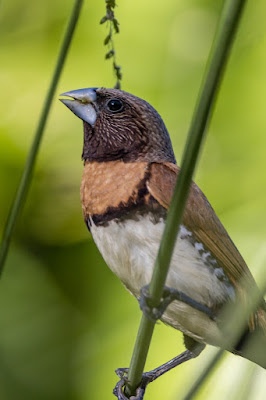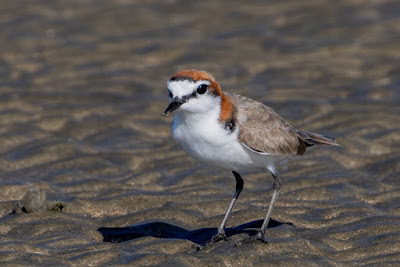
Wednesday, August 31, 2022
Hull Heads

Cattana Wetlands

Saturday, August 27, 2022
Cooktown




Stuart Highway Rest Areas South of Alice Springs



Tuesday, August 23, 2022
Alice Springs Sewage Ponds

Check my birding map for specific location.
The Alice Springs treatment plant is unique. It is recognised as one of the best birding areas in Australia and it is most unusual in that you can access it. With some safety formalities and a volunteer guide, you can walk around the ponds at your leisure. Contrary to the impressions of non-bird watcher civilians, it doesn't smell, it is very beautiful and very interesting. My guide Tanya was so knowledgeable and helpful - it made all the difference. The night before had been very cold and it was lovely to walk around the ponds chatting about birds and photography with the rising sun on our backs. It was a huge bonus and surprise to get 4 lifers here. I didn't get too many photos but sometimes the experience is what is important.
The first birds we saw and heard were the Little Crow. Distinguishing between the Little and Torresian Crow is proving to be a challenge for me and even though we saw the littles, I could not explain why it was so. Anyway, here it is.

As we hit the ponds we started to see waders. Most common was the Black-fronted Dotterel and they took flight as soon as we got close. Then Tanya spotted a Wood Sandpiper which was great and it let us get close enough to photograph it. I rattled off dozens of photographs and laughed when I processed them. The bird was so still that every photo was exactly the same. Some birds are just more active than others I guess.

As we moved to the first corner which was overgrown, we could hear the Little Grassbird and fairywrens. During the morning we saw all 3 local species of fairywren, the Splendid, Purple-backed and White-winged. The females are all plainer than the more shy males.


The highlight of the visit was seeing the shy Australian Spotted Crake. Amazingly, it not only came out into the open but the sun was actually in the right place. We ended up seeing 2 birds out in the open in different places which was just magic for my first sighting.

https://ebird.org/australia/checklist/S117363572
Balgal Beach








Desert Park

Check my birding map for specific location.
Desert Park in Alice Springs is probably the best wildlife park that I have ever been to and that is somewhat of a surprise in the middle of the desert. A combination of excellent planning, well maintained exhibits and incredibly interesting local animals makes it a place you can spend a lot of time at! I was there for a full day. I had tried to leave at lunchtime and visit somewhere else but there seemed no point when the area was just buzzing with birds. Some that I include here are from aviaries but there was also plenty to see walking around the park itself.
The fairywrens were such a bird with the Splendid and Purple-backed calling in lots of places. This was the first sighting in 2022 for me of the former so I stalked them until I found the glorious male.

It's neighbour was a rather more brightly coloured Red-capped Robin and it too was in calling mood. My camera struggled with the vibrance of the red.

In one of the aviaries I could hear a reed warbler calling and stood patiently until it appeared. These birds give everything when they are calling, their whole body shakes. It is quite a sight.
The surprising highlights of the exhibits were the incredible numbats. I'd never seen them before and I watched them for a while as they dug in the ground and chatted to each other. They are marsupials that feed on termites (hence the long nose I suppose). I really hope I get to see animals like this in the wild.

I have saved the best for last though. I have been on the road in Australia for 6 months now and I am always looking for buttonquail. Having visited lots of places where they have been seen and frequently thinking about where they might be, I had just about given up that they really existed. As ever, while wandering the park I had an eye out for them when, to my shock, I saw one scrabbling around in the dirt right next to the path I was on. It was tiny, cryptic and shy. Luckily there weren't other people around so I could watch it for a while. Difficult to photograph in the dark and as it moved around so fast, I was so pleased to get a couple of sharp(ish) shots.

Desert Park was an incredible birding location, no doubt!
Babinda




























